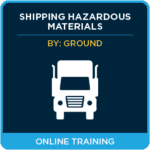This post was originally published in July 2017 and has been updated in November 2020 for accuracy.
Consumer Products
It seemed such a simple task at the time. A company decided to expand their consumer product line to include perfumes. They expected to send orders to customers, as they did their other products, by airmail. Yet, when setting up the shipment, an unexpected roadblock appeared. The U.S. Postal Service (USPS) told them that the perfume was a hazardous material.
How can a common consumer product like perfume be hazardous for transportation? Most perfumes have an alcohol base, designed to evaporate quickly, leaving the scent behind.
Unfortunately, this means that such perfumes are flammable liquids for transportation and are subject to Department of Transportation (DOT) as well as USPS restrictions for both ground and air transport.
So, the decision to go into perfumes created some major headaches for the company. But they recently got some good news. If the perfume is based on ethanol, one of the most common alcohols, the company will get a break – USPS has reduced the requirements for this one solvent. Ethanol, or ethyl alcohol, can be found in many consumer products, ranging from perfumes to hairspray to bath oil. By reducing the requirements for shipment of these products, shippers will enjoy reduced costs and complexity.
Airmailing Hazardous Materials
If you wish to airmail hazardous materials in the United States, your first step should be to consult USPS Publication 52 – Hazardous, Restricted, and Perishable Mail. This document provides instructions and restrictions for hazardous materials, as well as restricted articles such as firearms and perishable items such as food, plants and live animals. It seems people mail some quite unusual products – it’s rather surprising that “live scorpions” are mailable, although the guide notes “only under limited circumstances.”
Publication 52 addresses airmail for most flammable liquids as follows in section 343.3(a):
“For air transportation, parcels containing mailable Class 3 materials must bear the DOT square-on-point marking. The top and bottom portions of the square-on-point and the border forming the square-on-point must be black, and the center must be white or of a suitable contrasting background. The symbol “Y” must be black, located in the center of the square-on-point, and clearly visible. Mailpieces must also be marked with the proper shipping name “Consumer Commodity” and identification number “ID8000.” “Each mailpiece must also bear an approved DOT Class 9 hazardous material warning label … A properly completed shipper’s declaration for dangerous goods prepared in triplicate must be affixed to the outside of the mailpiece.”
However, ethanol-based flammable liquids, as well as solids impregnated with ethanol (such as cotton pads used as alcohol wipes) are also subject to section 343.27. This requires that the airmailed package be marked with the words “Contains Air-Eligible Ethyl Alcohol – Authorization (#)” in 14 point type. In addition, the package must display the mailer’s company name and address.
Where does one obtain the Authorization Number? That’s assigned by the USPS on request.
Publication 52 says:
“Mailers must submit a letter of request to the manager, Product Classification…. The request must include a list of each specific product to be mailed under the authorization, an MSDS for each product, the office of mailing, and expected frequency and quantity of mailings.”
To simplify the shipment of these materials, USPS has now removed the requirement for the shipping name, ID number and hazard class label. The package must simply display the “Contains Air-Eligible Ethyl Alcohol” mark, the Authorization Number, and the company name and address.
To make the job even easier, alcohol solutions shipped under these provisions no longer require the shipper to affix a Shipper’s Declaration for Dangerous Goods to the outside of the package.
Packing Instructions
Of course, when shipping hazardous materials by air, the shipper must follow specific packing instructions.
Publication 52 instructs:
- For content containing not more than 70% ethyl alcohol by volume, tender only parcels weighing 25 pounds or less. Each non-glass primary receptacle must not exceed 16 ounces of flammable liquid or 1 pound of solids. Each glass primary receptacle must not exceed 8 ounces of flammable liquid or 1/2 pound of solids. Total volume of flammable material per mailpiece must not exceed 96 ounces for flammable liquids or 16 pounds for flammable solids.
- For content containing more than 70% ethyl alcohol by volume, tender only parcels weighing 16 pounds or less. Each primary package receptacle must not exceed 8 ounces of flammable liquid or 1/2 pound of solids. Total volume of flammable material per mailpiece must not exceed 48 ounces for flammable liquids or 8 pounds for flammable solids.
Finally, the mailer must notify the receiver that they cannot remail the item without obtaining their own authorization by including the following written notice with the shipment:
“Flammable liquids or solids contained in these packages may be mailed only by consumers (the addressee) via surface transportation in accordance with USPS Publication 52, section 343. Full responsibility rests with the mailer to comply with all postal and nonpostal statutes and regulations regarding mail. Information regarding postal statutes, regulations, and mailing requirements is available from your local Postmaster or district manager, Business Mail Entry, and at the Postal Service’s mailing standards website, Postal Explorer, at pe.usps.com.”
The options for airmail under this provision include Priority Mail Express, Priority Mail, First-Class Mail, or First-Class Package Service. USPS’s summary of the new requirements can be found here.
If you have questions about Publication 52 or the DOT Hazardous Materials Regulations, please contact our Regulatory Experts here at ICC The Compliance Center Inc. You can reach us at 1-888-442-9628 (USA) or 1-888-977-4834 (Canada).
Stay up to date and sign up for our newsletter!
We have all the products, services and training you need to ensure your staff is properly trained and informed.
 Quantity Related Labels |
 Shipping Hazardous Materials by Ground in the U.S.A. Training Courses |







 ICC USA
ICC USA ICC Canada
ICC Canada